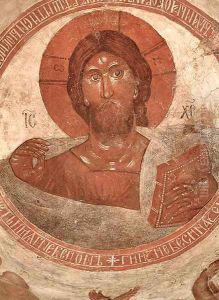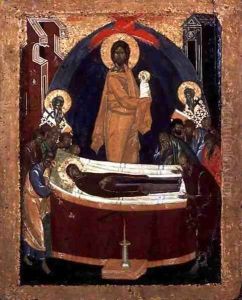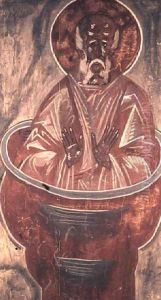the Greek Theophanes Paintings
Theophanes, also known as Theophanes the Greek (Theophanes the Cretan or Theophanes Strelitzas), was a distinguished Greek artist and icon painter of the Cretan School during the late Byzantine period. Although his exact place of birth is not recorded, it is widely believed he was born on the island of Crete, which at the time was a thriving center of post-Byzantine art and culture due to the presence of many Greek artists and scholars. Crete was then under the rule of the Republic of Venice, which created an environment where Byzantine and Western European artistic traditions began to intermingle.
Theophanes moved to mainland Greece and later to Russia. His exact arrival date in Russia is unknown, but he was active there from around 1370 until his death, which is presumed to be around 1410. While in Russia, Theophanes significantly influenced Russian medieval painting and was instrumental in the introduction and incorporation of Byzantine artistic forms into Russian art. This period was crucial for the development of the distinct style that would become known as the Novgorod School of icon painting, which combined local Russian artistic traditions with the sophistication of Byzantine art.
Theophanes is best remembered for his work in the Novgorod and Moscow regions of Russia. Among his most famous works are the frescoes in the Church of the Transfiguration on Ilin Street in Novgorod, which he painted in 1378, and his collaboration on the frescoes of the Dormition Cathedral in Moscow. His painting was characterized by expressive, emotional representation and a remarkable use of color and light, setting him apart from his contemporaries and making a lasting impact on the evolution of Russian iconography.
Despite his significant contributions to Russian art, little is known about Theophanes' life, and only a small number of works can be attributed to him with certainty. His work, however, marks a high point in the cultural exchanges between Byzantium and the Slavic world, and his influence can be traced through several generations of Russian artists. Theophanes the Greek is considered one of the greatest medieval painters of Eastern Europe, and his legacy endures in the rich tradition of Eastern Orthodox iconography.


